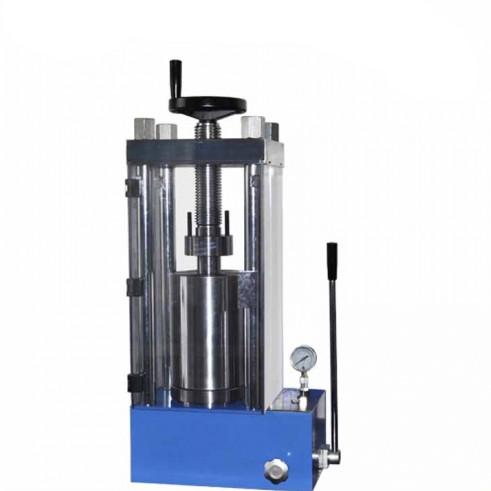Xiamen Tmax Battery Equipments Limited was set up as a manufacturer in 1995, dealing with Laboratory equipments, technology, etc. We have total manufacturing facilities of around 2, 000 square meters and more than 100 staff. Owning a group of experie-nced engineers and staffs, we can bring you not only reliable products and technology, but also excellent services and real value you will expect and enjoy.
A Cold Isostatic Press (CIP) is a specialized piece of equipment designed to apply uniform pressure from all directions onto materials, typically in powder form, at ambient or slightly elevated temperatures. This process is used to compact the material into a solid mass without the application of heat, making it particularly useful for creating green parts that can later be sintered or further processed. CIP is widely utilized in industries such as powder metallurgy, ceramics, refractories, and other fields where highdensity, uniform products are required.
Key Features of a Cold Isostatic Press
1. Uniform Pressure Application
Hydrostatic Pressure: CIP uses a liquid medium, commonly water or oil, to transmit pressure uniformly around the material being pressed. This ensures that the compaction force is applied equally from all directions, resulting in a more homogeneous product.
Pressure Range: Capable of generating pressures ranging from a few hundred bars up to 4,000 bar or more, depending on the specific requirements and capabilities of the press.
2. Material Encapsulation
Materials to be pressed are usually encapsulated in flexible, airtight containers made from elastomers or other suitable materials. These containers prevent the ingress of the liquid medium while allowing the transmission of hydrostatic pressure.
The shape and size of the container can be customized based on the geometry of the part being produced, enabling the creation of components with complex shapes.
3. Versatility in Material Processing
Powder Metallurgy: Used to produce preforms from metal powders which can then be sintered to achieve final properties.
Ceramics and Refractories: Ideal for producing dense, highperformance ceramic components for applications requiring wear resistance, thermal stability, and mechanical strength.
Graphite and Carbon Products: Utilized in the production of graphite electrodes, crucibles, and other carbonbased products.
4. Control Systems
Modern CIP systems are equipped with advanced control systems that allow precise monitoring and adjustment of pressure parameters during the pressing cycle. These systems may include PLCs (Programmable Logic Controllers) or HMIs (HumanMachine Interfaces) for ease of operation and data collection.
5. Advantages of Cold Isostatic Pressing
High Density and Uniformity: Produces parts with higher density and more uniform microstructure compared to uniaxial pressing methods.
Complex Geometry Handling: Able to create parts with intricate designs that would be difficult or impossible to achieve using traditional forming techniques.
Reduced Material Waste: Nearnetshape manufacturing minimizes the need for additional machining, reducing material waste and processing costs.
Improved Mechanical Properties: Components produced via CIP generally exhibit superior mechanical properties due to their dense and uniform structure.
Cold Isostatic Pressing Machine Price
6. Applications
Automotive Industry: Production of engine components, brake pads, and other parts requiring high durability and performance.
Aerospace: Manufacturing lightweight, strong components for aircraft engines, turbines, and structural parts.
Medical Devices: Creation of biocompatible implants and surgical instruments with high precision and reliability.
Research and Development: Used in laboratories for developing new materials and testing their properties under controlled conditions of pressure.
Choosing the right cold isostatic press involves considering factors such as the types of materials you will be working with, the desired pressure range, part geometry, production volume, and any specific features relevant to your intended use (e.g., automation level, control system sophistication). Investing in a CIP tailored to your needs can greatly enhance operational efficiency, product quality, and overall competitiveness in your market. Whether for industrial production or laboratory research, the appropriate configuration of a cold isostatic press can significantly improve outcomes by providing precise control over the compaction process.


